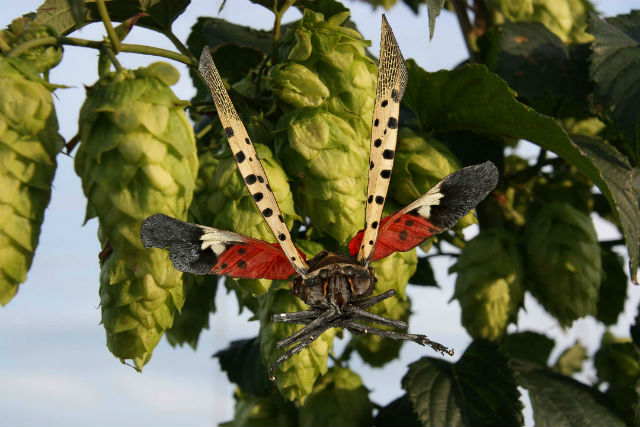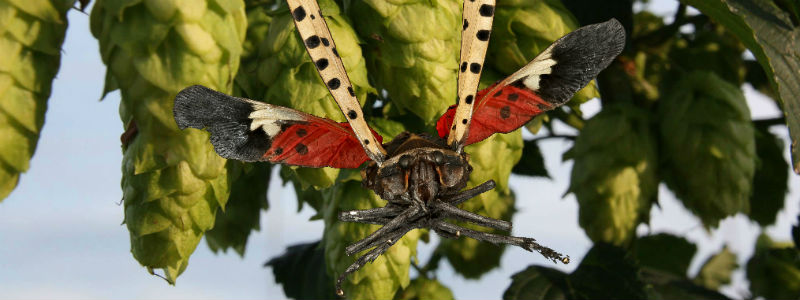
A industry still in its infancy, hop farming on the East Coast, could be facing a major hurdle in 2018.
An invasive species from Asia, called a Spotted Lanternfly, has become a menace for hop growers in southeast Pennsylvania and northern Virginia. That could impact business for craft breweries that may be looking to use locally-sourced hops from that region. An obvious spread outside the current radius of the infestation could be very disruptive to hop growers in the region, says Sunny Brae Hop Farms owner Adam Dellinger, who worked with roughly two dozen breweries, including Troegs, in 2017.
“Just how [disruptive] … we are not sure yet,” he said. “At minimum, it’s going to be yet another pest we have to account for when developing pesticide spray regimens. I have heard some horror stories the damage that swarms can do when they are on an orchard, but it’s very hard to say how it will impact small hop yards like mine in Pennsylvania.
“It is something that anyone thinking about getting started in hops should absolutely be aware of, and be prepared to deal with it quickly even if it means the use of additional pesticides that they would rather not have to apply on their farm. I am not aware of any natural predators — as is often the case with invasive pests — so we will not have a lot of options with this for a while.”
It’s serious enough of a infestation that a few weeks ago, U.S. Secretary of Agriculture Sonny Perdue announced $17.5 million in emergency funding to stop the spread of the Spotted Lanternfly in southeastern Pennsylvania.
“We’ve seen a dramatic expansion in the range of this pest over the last year and we need to take decisive action to prevent the Spotted Lanternfly from spreading throughout Pennsylvania and into neighboring states,” Perdue said.
The Spotted Lanternfly, with its distinctive and colorful wings, was first identified in Pennsylvania in 2014. The affected area expanded from 174 square miles in fiscal year (FY) 2016 to approximately 3,000 square miles by the end of FY 2017.
“This is a big concern for us,” Dellinger said. “Extension services in Pennsylvania and neighboring states are well aware … We don’t have a lot of guidance right now except to remove any nearby Ailanthus (an invasive tree species) as the SLF uses that bark surface to lay eggs. We are scouting for the pest and their egg masses and removing Ailanthus from our farm.
“In general, farms are paying attention to any equipment or supplies that are transported from area to area, removing Ailanthus, and scouting. When the pest inevitably appears on my farm, I will be forced to use pesticides to try to keep them from destroying my crop.”
Dellinger said he first learned about this pest through email newsletters through the PA Dept of Ag and Penn State Extension.
“We have not seen it at our farm yet, and our county is not currently in the quarantine zone…yet,” he told Brewer Magazine. The former USDA employee, and avid homebrewer and craft beer fan started with a quarter acre of hops in 2013 and has expanded to five acres for this year.
“But we are only a couple of counties away, and I would not be surprised one bit to see it here in 2018,” he said.
Photo Illustration compiled by Jon Sicotte






3 Trackbacks / Pingbacks